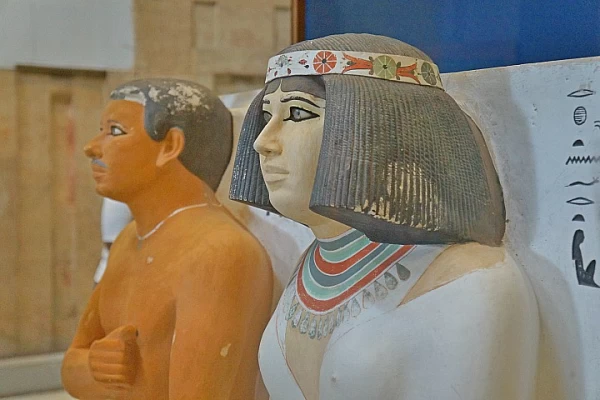
King Khufu's Solar Boat Museum in Egypt
King Khufu's Solar Boat Museum in Egypt
During the time of King Khufu in the 25th century BC, a watercraft known as Khufu's Boat, or Sun Boat, was built. It currently resides in the Sun Boat Museum, which is close to the Giza Pyramids in Egypt. The use of boats and ships for purposes of transport was also significant in the Nile River; the Egyptians remained in their own country while they also went as far as Sudan and other African nations: They went to Sudan and other nations to bring back animals including lions, elephants, tigers, monkeys, and cows.
They also imported foreign products, such as leather, gold, ivory, ebony, electrum, ostrich feathers, and incense. Electrum is a natural alloy, a mixture of gold and silver. They needed sails when sailing on the Nile south, against the current, but the masts were let down and rested horizontally on the deck when sailing north, with the current.
Although the number of surviving boats is not large, much has been learned about the forms and purposes of boats in ancient Egypt from hundreds of model boats found in tombs throughout the country, the most important of which is the Makt-Ra boat. Models of papyrus boats were made of painted wood, although real boats were made of wood, and only a few were made of papyrus sticks.
Wicker rafts were mainly used for swamp hunting; with long sticks, nets or pegs, or for organized sporting competitions. Papyrus boats were associated with lords or royalty. They were used: Either for daily activities, such as sailing and hiking, or for religious occasions, such as transporting statues of gods or for pilgrimages or ceremonies associated with exorcism.
King Sneferu had a fleet of forty ships that were used to import cedar planks from Lebanon. The features and designs of ancient Egyptian boats varied according to their functions and whether they were used to sail on the Nile or across the Mediterranean or the Red Sea. Religious and ceremonial (ritual) boats sailed on the Nile and the sacred lakes.
Warships evolved in size and features (capabilities and equipment); the largest of them were those built in the era of the Raamasa, with a weight of about fifty metric tons. Two large boats were found for King Khufu. One of them was discovered in 1954 and dug out of its pit south of the Great Pyramid: The other remains in its pit to the west of the first. The (exhumed) boat consists of 1,224 cedar wood parts, with numerous holes: To bind the parts together with cedar ropes.
The Egyptian Museum displays two smaller boats belonging to King Senwosret III, which were found in Dahshur. In the tomb of King Tutankhamun, 35 wooden models of various boats were found, some with colorful cabins for the comfort of the king and his entourage.














